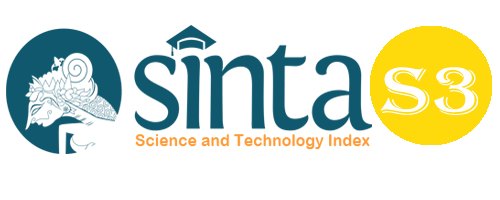Stevenson's Scheme and People's Rubber Exports at Labuhan Bilik Harbor, 1922-1928
Abstract
This paper discusses the policy of unilaterally limiting rubber exports by the UK with the so-called Stevenson's Scheme for smallholder rubber exports through Labuhan Bilik Harbor. The limitation scheme that took place during the 1922-1928 period was implemented by the UK for the phenomenon of the decline in world rubber prices after World War I. England, whose colonies dominated world rubber exports, hoped that the Netherlands would join in this plan to restrict exports. However, the Dutch refused. This decision brought blessings to the Dutch Indies rubber producers, including in Labuhan Batu with its main port of Labuhan Bilik. These port export figures show an increase over the period that Stevenson's Scheme was applied. Even so, the question is, is it true that the increase in smallholder rubber exports through Labuhan Bilik Harbor was caused by the application of Stevenson's Scheme? Or, are there other factors that need to be considered around the increase in exports in that period? This descriptive-analytic study attempts to answer these questions using colonial sources. The sources used in this paper are in the form of colonial reports, such as the Colonial Verslag, the Report of the Dutch Indies People's Rubber Inquiry Commission, the Dutch Indies People's Rubber Periodic Report, the Job Handover Report, and other literature sources.
Keywords
Full Text:
PDFReferences
ANRI, MvO Controleur Labuhan Batu GJ Forch.
Departement van Kolonien, “Korte Beschrijving van het Landschap Bila”, in Bijdragen tot de Taal, Land, en Volkenkunde van Nederlandsch-Indie, tt, p. 547-557.
Drabble, JH, Rubber in Malaya, (1876-1922): The Genesis of the Industry, Kuala Lumpur: Oxford University Press, 1973.
---------------, Malayan Rubber: Interwars Years, London, Macmillan, 1991.
Edi Sumarno. (1998). "East Sumatra People's Rubber Farming (1863-1942)", Thesis, Gadjah Mada University.
Gelder, A. van. (1950).“Bevolkingsrubbercultuur”, in CJJ van Haal and C. van de Koppel, De Landbouw in de Indische Archipel, Vol. III, The Hague: W. van Hoeve.
M. Gade Ismail. (1991). “Seuneubok Lada, Uleebalang, and Kumpeni: Socio-Economic Development in the Boundary Regions of East Aceh, 1840-1942”, Dissertation, Rijksuniversiteit te Leiden.
McFadyean, A., ed. (1944). The History of Rubber Regulation, 1934-1944, London: George Allen & Unwin.
Masri, H. et al. (2018). War Strategy Done by Gayo and Alas People Against Dutch Colonial (1901-1912). Budapest International Research and Critics Institute-Journal (BIRCI-Journal). P. 25-39.
Pane,I. and Suswanto, H.(2019). The Study of Indisch Architecture Development as anEffort in Preserving the Heritage of Colonial History in Medan. Budapest International Research and Critics Institute-Journal (BIRCI-Journal). P. 207-214.
Rathomi, Naf'an. (2011). “Labuhan Bilik Harbor during the Dutch Colonial Period (1862-1939), Thesis, University of North Sumatra.
Slotemaker, CG, De Bevolkingsrubbercultuur in Nederlandsch-Indie. (1926). VI, Riouw en Onderhorigheden, Oostkust van Sumatra en Atjeh en Onderhorigheden, Weltevreden: Landsdrukkerij.
Suprayitno, et al. (2020). From Labuhan Deli to Belawan: The Removal of Harbor inMedan during the Dutch Colonial Period of 1863-1942. Budapest International Research and Critics Institute-Journal (BIRCI-Journal). P. 1392-1402.
Verslag van "De Handelsvereeniging te Medan", 1912-1920, and 1928-1940.
Waard, J. de. (1934).“De Oostkust van Sumatra”, in Tijdschrift voor Economische Geografie, Vol. 25, No. 8, August.
Wie, Thee Kian. (1977). Plantation and Export Growth: An Economic History of East Sumatra, 1863-1942, Jakarta: LP3ES.
DOI: https://doi.org/10.33258/birci.v3i4.1398
Article Metrics
Abstract view : 111 timesPDF - 65 times
Refbacks
- There are currently no refbacks.

This work is licensed under a Creative Commons Attribution-ShareAlike 4.0 International License.

This work is licensed under a Creative Commons Attribution-ShareAlike 4.0 International License.

_.gif)

















_.gif)



